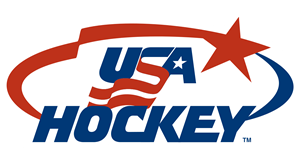Get your stick right!!
We all know you can’t score goals in hockey by kicking the puck. It all comes down to, and starts with the stick. From how the top and bottom are taped, to length, flex, and curve. Here’s a quick breakdown to get it right before we even touch a puck!
Taping:
NO excessive knobs on the top unless you are a goalie with a heck of a flying poke check. The knob should be an 1/8” thick or less at the very edge of the ‘butt end.'
Did you know that the knob is used not only to help aid in picking up your dropped stick, but more importantly to aid in hand placement and increase the shot ability?
There should be enough tape below the knob to allow your top hand to firmly grip. Meaning one layer of tape only, a bit longer than the width of the hand. What you do below the knob is personal preference. Meaning, some players like a little extra grip. So, they will twist tape into a line and wrap it around prior to the top layer of tape.
Preformed grips are ok as long as they are slim and you can wrap your pinky finger around it.


Now on to the Blade. If you’re up for some light reading, click the article below for a great dive into facts and myths. The moral of the story for taping the blade is from heal to toe. White or black won’t make a difference. Neither will taping the toe or not taping the toe. Just ONE layer of tape at a time. If it gets warn out, replace it all.

Onto the Length. Standing without skates on, hold the stick close and parallel to your body. The length should be vertical when measuring. It should come to the bottom of your nose. On skates it will be right around the chin area.
Having a stick that is too long or too short, believe it or not, will drastically change the ability to control anything to do with the puck. You don’t need to spend a fortune on the latest and greatest lightweight stick. Especially if the player doesn’t know how to use its features.
If the player out grows a stick quickly, there’s an option to buy a ‘plug’ to extend the stick a few more inches and get the most out of it.
Curve and Flex are last, but not least. Flex is not really that important at a younger age as most young players have a hard enough time figuring out how to properly hold it, let alone use the flex on a shot. The curve should be researched as to what specifically you want to do with it. Much like golf clubs and degrees, each curve has a specific thing it’s good at. Finding the curve that works best comes with time and practice. Most of the time in the beginning of a young hockey player’s career, a flat blade or slight, gradual curve is sufficient.
Click the links below for more information.
Oops!
You have unsaved elements
Please save or cancel the pending changes to the elements within your page and then try saving again.

